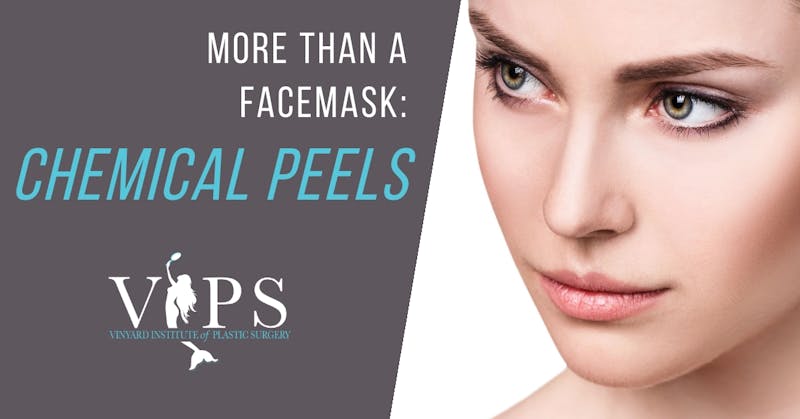Facial fillers and Botox are popular, but the market for chemical peels is still going strong. Simply put, the chemical peel uses acid to break down the top layer (or layers) of skin in order to diminish the look of fine lines, wrinkles, and irregular skin. Believe it or not, chemical peels have actually been around since the mid-1800s, then gained mainstream appeal in the late ‘90s and early 2000s.
A decade or two later, roughly 1.4 million chemical peels were performed in the United States during 2017. So let’s talk about everything you need to know about chemical peels.
What Is A Chemical Peel?
A technique utilized to boost the appearance of the skin on the face, neck, or hands, the chemical peel is applied to the skin to trigger it to exfoliate. The newly regenerated skin is typically smoother and less wrinkled to the old skin. The new skin is also more sensitive to the sun. Fundamentally, there are 3 kinds of chemical peels:

#1. The Superficial (Or Lunchtime) Peel
In the shallow chemical peel, alpha-hydroxy acid or another mild acid is used to pass through the top layer of skin to gently exfoliate. Other acids used in superficial peels include glycolic, salicylic, kojic acid or malic acids.
The treatment improves the appearance of mild skin discoloration or rough skin, while rejuvenating the face, neck, chest, or hand skin. These are the mildest form of chemical peel, as they call for little downtime and address only the top layer of skin. You will likely experience soreness for around 20 to 30 minutes, in addition to some dryness or flaking throughout the day.
#1. The Superficial (Or Lunchtime) Peel
In the shallow chemical peel, alpha-hydroxy acid or another mild acid is used to pass through the top layer of skin to gently exfoliate. Other acids used in superficial peels include glycolic, salicylic, kojic acid or malic acids.
The Superficial Peel improves the appearance of mild skin discoloration or rough skin, while rejuvenating the face, neck, chest, or hand skin. They are the mildest form of chemical peel.
The treatment improves the appearance of mild skin discoloration or rough skin, while rejuvenating the face, neck, chest, or hand skin. These are the mildest form of chemical peel, as they call for little downtime and address only the top layer of skin. You will likely experience soreness for around 20 to 30 minutes, in addition to some dryness or flaking throughout the day.
#2. The Medium Peel
In the medium chemical peel, glycolic or trichloroacetic acid is utilized to penetrate the outer and middle layers of the skin to remove worn out skin cells. The treatment enhances aging lines, fine lines, wrinkles, freckles, or moderate skin discoloration. Additionally, the mild chemical peel can be used to smooth out harsh lines and treat some precancerous skin developments (such as actinic keratosis).
These medium-depth chemical peels make use of the trichloroacetic acid at concentrations of 35 percent or less. These aren’t your typical day spa facials as they target skin with substantial damage, sun spots, light to moderate acne scars, and thin skin under the eyes or dark circles. The downside is the duration of recovery. The skin is left raw and red, though it shouldn’t be painful.
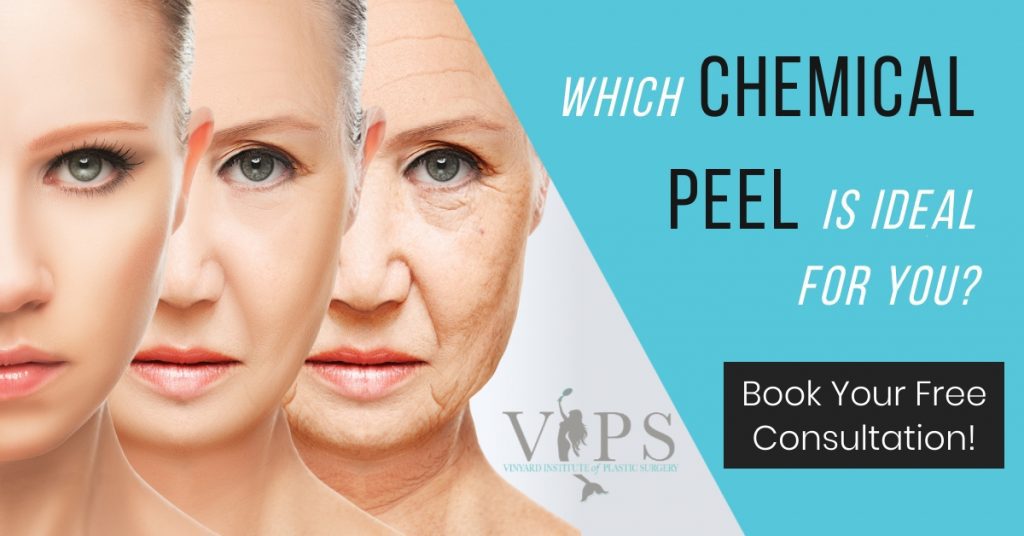
#3. The Deep Peel
In the deep chemical peel, trichloroacetic acid or phenol is used to eliminate broken skin cells. The therapy effectively removes moderate lines on the face, age spots, blemishes, and superficial scars. Patients will see a remarkable renovation in the skin’s appearance. These, the deepest of all of the peels, target significant skin concerns such as extreme acne scars, extreme sun damage or looseness of the skin. In the deepest peels, trichloroacetic acid is used at a 70 percent concentration.
Note that deep-depth peels may not be suitable for those with darker skin tones, as it could lead to an increase in scarring or hypopigmentation.
For those who routinely get peels, the stamina of the peel can be boosted over time since the patient’s tolerance to the acidic treatment boosts over time. Gradually, patients have the ability to undergo stronger, harsher peels with less downtime.
Chemical Peels regenerate the skin, causing it to appear smoother and tighter, reduce the appearance of wrinkles and fine lines, temporarily improve skin discoloration, and heal scarring on the skin.
4 Benefits Of A Chemical Peel:
- Regeneration of the skin, causing it to be smoother and tighter.
- Reduction of wrinkles and fine lines.
- Temporary or long-term improvements to skin color and pigmentation (particularly for women on the contraceptive pill who subsequently become pregnant or have a history of brown facial staining).
- Healing of marks or scarring on the skin.
What Does Recovery Look Like After A Chemical Peel?
#1. The Superficial Peel
The superficial chemical peel typically only requires 1 to 7 days to fully recover. The addressed skin will likely be red and may even peel after the treatment. Lotion or cream must be applied regularly until the skin heals, in addition to the daily use of sunscreen. Makeup can typically be worn the very next day.
The Medium Chemical Peel requires 7 to 14 days off for full recovery.
#2. The Medium Peel
The medium chemical peel requires a bit more time off, 7 to 14 days to fully recover. The skin which is treated will be red, and possibly swollen after the procedure. Swelling will worsen for the first 2 days and eyelids might even swell shut temporarily. The skin may break out in sores or crust and peel off after 7 to 14 days.
The skin will need to be soaked daily for the specific period, followed by the regular application of lotion. Antiviral medicine is taken for a minimum of 10 days. It’s a fairly hands on two weeks, which requires constant care and treatment. It’s necessary to stay clear of all sunlight until recovery is complete. Regular makeup may be utilized after only 5 to 7 days. A follow-up appointment is almost certainly needed for your surgeon to keep an eye on the progress of your skin.

#3. The Deep Peel
The deep chemical peel requires a full 14 to 21 days to heal. The area which received the treatment must be bandaged during this time. The skin will need to be soaked 4 to 6 times daily, followed by 14 days of applied ointment, an antiviral prescription, and lotion. Sunlight must be exposed for 3 to 6 months, but makeup may be worn after only 2 weeks. Multiple follow-up visits are required for your surgeon to keep an eye on the skin’s progress.
For all three types of chemical peels, it is critical to avoid direct sunlight exposure for a time after the treatment. Sunlight on the unprotected skin can trigger negative side-effects such as infection or scarring.
It is critical to avoid direct sunlight exposure for a time after your chemical peel treatment.
What Happens During A Chemical Peel?
Before the chemical peel, your surgeon will cleanse the skin to remove any remaining makeup, sunscreen, or oil. Then lotion will be applied to the skin around the eyes, nose, and mouth. A lip ointment is typically used to keep the mouth protected. Then, comes the acid…
The length of time that the acid remains on the face depends on the strength and type of chemical peel. If it’s mild, the peel will work quickly and activate on its own before the individual will have the ability to clean it off. If the peel is more intense, it will require a second agent to activate. If the peel is the deepest kind, it will also require an active agent to stop the acid from working.
The chemical peel triggers a response from the skin to regenerate the top layer of skin to treat the skin tone, structure, and promote the growth of collagen.
During the treatment, the chemicals trigger a response from the skin to regenerate the top layer of skin to treat the skin tone, structure, and promote the growth of collagen. A chemical peel triggers tiny injuries to the skin which encourage the growth of collagen and regeneration of fresher, newer skin.
Is A Chemical Peel Right For You?
The chemical peel is just one way to restore and revitalize the skin. There are also laser treatments, radio frequency treatments, and mechanical therapies like dermabrasion. However, chemical peels are best because they are not only more economical, less painful, and much quicker.
When determining whether a chemical peel is the absolute best option for you, schedule a consultation with Dr. Vinyard and VIPS! He’ll be able to help you determine which of the various skincare options is ideal to help restore your stunning, glowing skin.
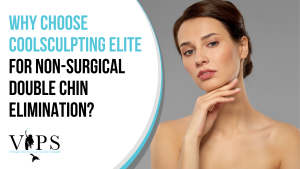 July 5, 2023 No Comments
July 5, 2023 No Comments
CoolSculpting Elite, the latest innovation in non-surgical fat reduction technology, is taking double chin elimination to a whole new level. Designed for both men and women, this game-changing treatment is all about saying hello to a sleeker, more defined profile.
Read More »
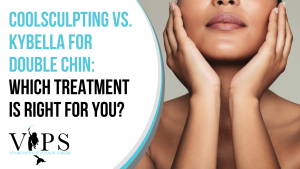 May 17, 2023 No Comments
May 17, 2023 No Comments
We’ll compare two of the most popular non-invasive treatments for double chin reduction: CoolSculpting and Kybella. As you embark on your journey to reclaim your jawline and accentuate your facial contours, knowing which treatment is right for you is essential. Let’s break down the science behind these cutting-edge procedures, weigh the pros and cons, and help you make the best choice to enhance your natural beauty!
Read More »
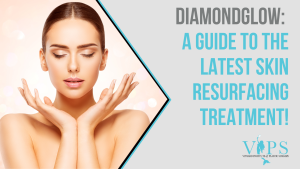 April 27, 2023 No Comments
April 27, 2023 No Comments
The latest luxurious skin resurfacing treatment that reveals a radiant, glowing complexion! We’ll explore the ins and outs of DiamondGlow, from what it is to how it works with the SkinMedica serums. So whether you’re looking to rejuvenate your skin or just curious about the latest skincare trends, keep reading to discover everything you need to know about DiamondGlow!
Read More »
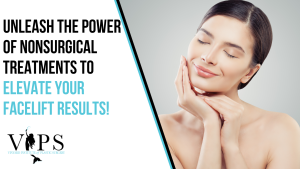 March 22, 2023 No Comments
March 22, 2023 No Comments
Let’s explore the many non-invasive options available to help maintain facelift results — because who wouldn’t want to protect that investment?
Read More »
Facebook-f Twitter Instagram Youtube Linkedin



